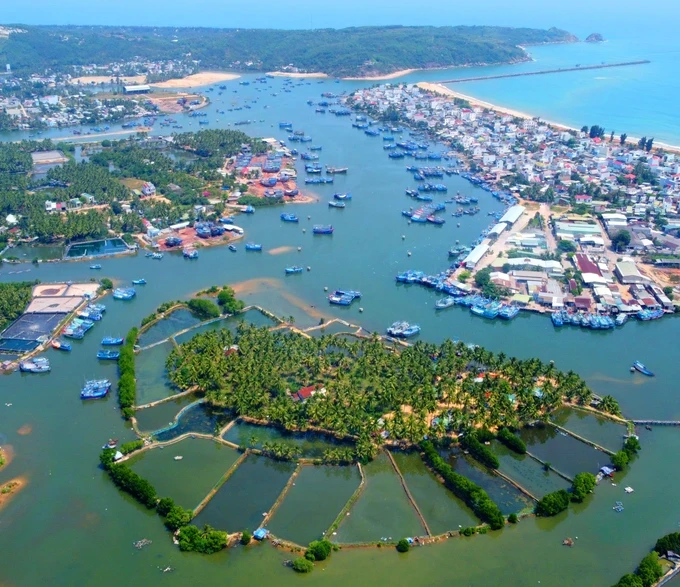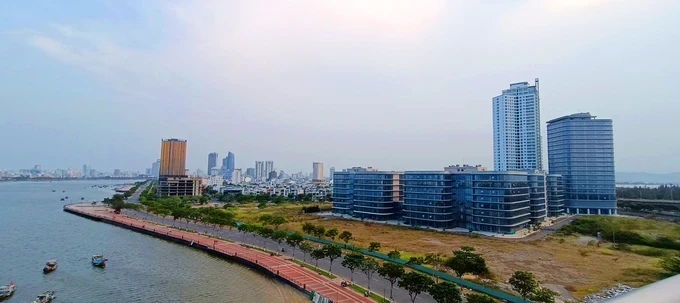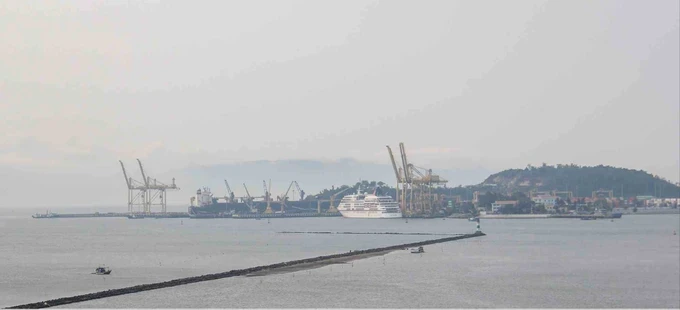Central region taking better advantage of its strengths for comprehensive growth
Many provinces in the Central region have updated their planning, more clearly identifying their strong points for green and sustainable growth overall.

In the first meeting on April 12 of the National Steering Committee about adopting strategies for sustainable marine economy growth of the country, leaders of Da Nang City and other Central provinces asked for a detailed instruction on identifying purely marine economy industries, a national indicator set for seas and islands, a national criteria set for sea-related strengths, and comprehensive planning for exploitation and sustainable use of sea resources.
Deputy Minister Tran Hong Ha then stressed in the meeting about the urgent need for a criteria set to assess a country with sea-related strengths and advantageous marine industries, along with suitable policies for investment, finance, environment, and resource mobilization.
He assigned the Ministry of Natural Resources and Environment as the leader to introduce core missions for the development of common indicator sets of the country regarding marine economy. Relevant ministries are requested to urgently form a fund to promote the sustainable growth of marine economy and release preferential policies on wind energy, seaport construction, investment, human resources training for the marine economy. There must be standards and models for the establishment of ecological, smart marine urban areas that can preserve the marine culture. Green growth must exist in all aspects of the marine economy in association with free trade zones.

In general, most comprehensive planning documents of Central provinces prioritize green, circular economy and knowledge economy with effective exploitation of science-technology and digital transformation.
For instance, the one of Binh Dinh Province states that by 2050, the province will have become a center for marine economy, science-technology and innovation, AI implementation, and tourism. Highly supporting this planning, Dr. Tran Du Lich from the National Advisory Council for Monetary Policies recommended that the province should concentrate on digital economy, green economy, circular economy, carbon economy, particularly in the aspects of wood products, renewable energy, semiconductor industry, AI, and green urban area. Thanks to its scientific valley, Binh Dinh Province now can form partnerships with leading training centers in the world in science-technology fields.

More importantly, cross-regional cooperation has become the foundation for overall economic growth of many Central provinces. For example, Quang Nam Province is going to pour more money into constructing major routes to boost the links among localities with similarities in geographic location and economic features. The province also deeply participates in the region’s value chain production in the industries of automobile manufacturing, tourism, hi-tech agriculture, logistics.
Near Chu Lai Airport, there will be a logistics center, playing the role of a product transport hub for economic zones, industrial parks, and manufacturing areas in the whole Central coastal region. In addition, the province will facilitate regional connections in its North to Da Nang City and Thua Thien-Hue Province, and in its South to Quang Ngai Province and Kon Tum Province.
Potential as they are, Central provinces are also facing various challenges. Assoc. Prof. Dr. Bui Quang Binh from University of Economics – Da Nang University commented that the Central Government should upgrade necessary legal mechanisms and policies for coastal economic zones to formal laws. Simultaneously, inadequate or overlapping legal documents should be adjusted or eliminated.

There must be precise evaluations of special features of each coastal economic zone for corresponding institution and policy issuance, such as a support policy for the growth of the automobile industry and a center for gas-electricity and petrochemical products in Chu Lai Economic Zone, oil and gas exploitation and processing industry in Dung Quat - Nghi Son, and heavy industry and metallurgy in Vung Ang and Dung Quat, hi-tech industrial parks or agricultural and forestry zones.
Dr. Binh added that there should be a 20-year evaluation for coastal economic zones by the Government in order to expand or shrink them according to their development capacity. Public investment should become the incentive to encourage private investments for general growths of coastal economic zones, beginning with building more connection roads.

Mr. Uong Viet Dung, spokesperson of the Transport Ministry, informed that in the Road Network Development Planning in the 2021-2030 Period, with a Vision to 2050, the coastal road system in the Central region will have a total length of 3,034km. Most roads will be of level-3 or -4 standards. Those overlapping with national highways receive investment like a national highway does while others obtain money at the provincial level. The latter are under the charge of the People’s Committees of provinces or cities.
The Transport Ministry asked that the People’s Committees of relevant provinces and cities actively carry out preparation tasks for road construction projects like identifying suitable road directions, capital mobilization methods, suitable investment models. Any arisen difficulties must be reported to the Prime Ministry and relevant ministries for timely addressing.
Dr. Nguyen Tac An, former Head of the Nha Trang Institute of Oceanography, commented that there have been serious conflicts and consequences of uncontrolled development of tourism real estate. Localities should better evaluate possible effects of a real estate project on local residents. There must be land resource allocation for public facilities like parks, playgrounds, nurseries, hospitals, schools to serve local dwellers. Moreover, as the Central coastal area has fishing advantages, it is advisable to integrate this with entertainment and tourism, water sports like other developed nations.








